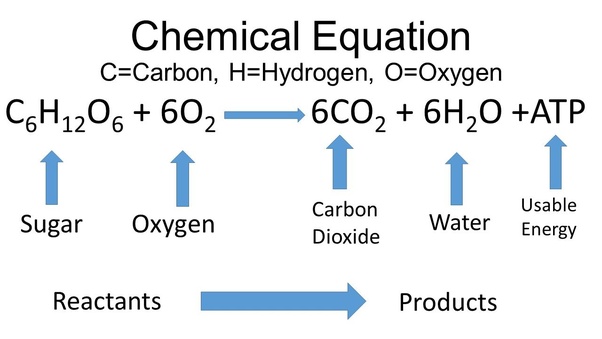Cellular Respiration
#biology #gcse #has-images #resp
Cellular Respiration
Respiration
Cellular respiration is an exothermic reaction which is continuously occurring in living cells. The energy transferred supplies all the energy needed for living processes. Respiration in cells can take place aerobically (using oxygen) or anaerobically (without oxygen), to transfer energy.
Humans require energy so that we can contract our muscles, make larger molecules, so that cell division can take place (for growth and repair), active transport, transmitting nerve impulses, movement and the maintenance of constant body temperature. We get this energy from the food that we eat, and the useful molecules are absorbed into our bloodstream.
Glucose provides a lot of chemical energy, and it can be found in a lot of the food that we eat.
There are 2 types of respiration:
Aerobic respiration requires oxygen in order to break down the glucose to create more energy, and anaerobic respiration does not require oxygen to break down the glucose, but creates less energy.
Aerobic Respiration
Aerobic respiration releases a lot more energy in cells when food is broken down in the presence of oxygen.
Glucose + Oxygen → Carbon dioxide + Water + Energy
Carbon dioxide and water are also produced during the process of aerobic respiration.
Anaerobic Respiration
Anaerobic respiration releases less energy in cells when food is broken down without oxygen. As the oxidation of glucose is incomplete in anaerobic respiration much less energy is transferred than in aerobic respiration. When humans are exercising, they would benefit from aerobic respiration as they are releasing more energy. However, as the oxygen levels decrease, humans would then switch to anaerobic respiration.
Glucose → Lactic Acid + Water
The formation of lactic acid in the body causes the cramp that people feel when they’re doing exercise. There is not enough blood flowing through, therefore anaerobic respiration has to take place. In order to get rid of the cramp, more oxygen is needed in the body so that the body can switch back to aerobic respiration.
Anaerobic respiration can also take place in yeast, where glucose is broken down to create ethanol, carbon dioxide and energy.
Glucose → Ethanol + Carbon Dioxide + Energy
Anaerobic respiration in yeast cells is called fermentation and has economic importance in the manufacture of bread and alcoholic drinks
Response to Exercise
During exercise the human body reacts to the increased demand for energy. The heart rate, breathing rate and breath volume increase during exercise to supply the muscles with more oxygenated blood.
If insufficient oxygen is supplied anaerobic respiration takes place in muscles. The incomplete oxidation of glucose causes a build-up of lactic acid and creates an oxygen debt. During long periods of vigorous activity muscles become fatigued and stop contracting efficiently.
Blood owing through the muscles transports the lactic acid to the liver where it is converted back into glucose. Oxygen debt is the amount of extra oxygen the body needs after exercise to react with the accumulated lactic acid so that it can be removed from the cells.
Metabolism
Metabolism is the sum of all the reactions in a cell or the body. The energy transferred by respiration in cells is used by the organism for the continual enzyme controlled processes of metabolism that synthesizes new molecules.
Metabolism includes:
- Conversion of glucose to starch, glycogen and cellulose
- The formation of lipid molecules from a molecule of glycerol and three molecules of fatty acids
- The use of glucose and nitrate ions to form amino acids which in turn are used to synthesise proteins
- Respiration
- Breakdown of excess proteins to form urea for excretion.




